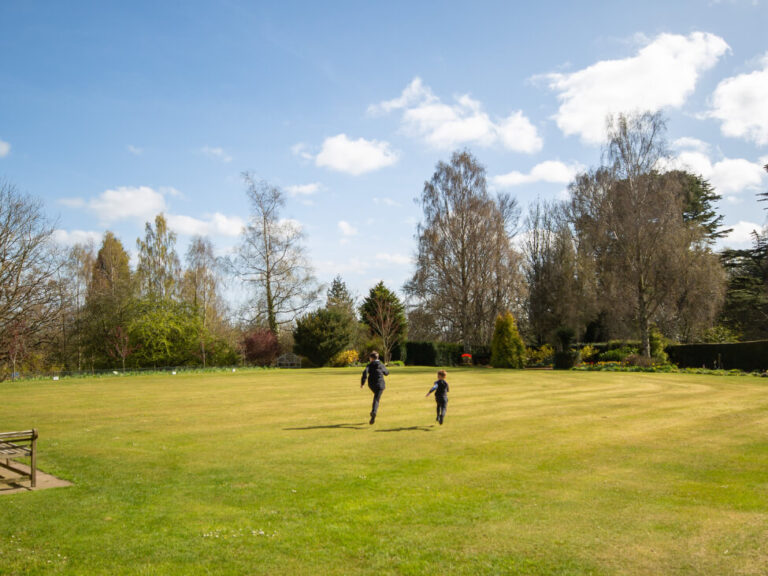The House
Paxton House is one of the finest Palladian houses in the country, a gentleman's residence designed to show the taste, wealth and position of Patrick Home of Billie who inherited a fortune from his parents in the 1750s during the reign of George II.

Inspired By Love
Patrick Home of Billie built Paxton House on a new site high above the river Tweed from 1758. He had not long returned from Europe and hoped that he would be able to marry his Prussian sweetheart, Sophie de Brandt, but their love match was prevented. Patrick then inherited Wedderburn Castle, 10 miles west, and moved on to rebuild that whilst, first renting, then selling Paxton to his cousin Ninian Home, who had established himself as a prominent sugar planter in the West Indies and wanted a fashionable home in Britain.
House was beautiful and was v. interesting. Jim the tour guide was incredible and very funny but knowledgeable! Thank you for a great visit.

Changing the Face of Architecture
Patrick Home’s architects were John and James Adam, brothers of Robert Adam; the three were sons of Scotland’s premier architect William Adam. The three Adam brothers changed the face of British architecture, introducing neo-classical style based on ideas gleaned from the architecture of Italy. At Paxton, John and James Adam used the design principles of Italian architect, Andrea Palladio, who in turn had used those of ancient Greece and Rome. The result is a beautifully proportioned pink sandstone house, with an impressive entrance portico supported on full columns, a pair of symmetrical wings for kitchen and stables and large, light rooms.

Trend Setting Interiors
The interiors of the house that Ninian Home moved into in 1768 were unfinished. Ninian and his wife, Penelope, commissioned Britain’s most fashionable designers, architects Robert and James Adam and London-based cabinetmakers, Thomas Chippendale and his son, Thomas Chippendale Junior, to create the neo-classical interiors we see at Paxton today. Together they adorned the ceilings, walls, chairs and tables with decorative motifs borrowed from ancient Rome like medallions, urns and swags. Look out for sphinxes, griffins and dancing nymphs.
Well worth booking onto the house tour to view the fine house, rooms and furniture.

Georgian Daily Life at Paxton
This was a civilised, well-ordered Georgian household, where meals were prepared for the family in the kitchen to be enjoyed in the opulent Dining Room, while Penelope Home presided over the tea table in the Drawing Room and the naturalistic landscaped grounds encouraged strolling in the afternoons. Upstairs, clothes were stored folded in mahogany presses, bed curtains could be drawn for privacy, hair powder was applied in a separate closet and newly fashionable sprigged cotton chintz brought delicacy to the rooms in soft furnishings.

Regency Grandeur
Little changed at Paxton for 20 years following the completion of the Drawing Room in 1791 until George Home, Ninian’s younger brother, decided he needed more space to display some of the family treasures he had inherited from his cousin Patrick. In 1811, George commissioned a grand new Picture Gallery, Library, and Bust Room from King’s Architect in Scotland, Robert Reid. Robert Reid followed Robert Adam adopting in the Neoclassical style, designing some of the Edinburgh University buildings. His work at Paxton, his only country house commission, is thought to be the best example of his work. The Picture Gallery was more severe in style than the Adam rooms and is today decorated in High Victorian taste, as it looked in 1872. It was furnished by Scotland’s greatest cabinet maker, William Trotter, also known for his work in furnishing Edinburgh’s New Town.

A New Life for Paxton House
The house then passed through successive generations of the Home family to John Home Robertson, a Labour Member of Parliament. Several of the 18th century interiors were little changed and others have been restored to how they were described in an 1820 inventory, so that Paxton remains today remarkably little changed since its Georgian heyday. In 1988, John gave the House, most of its contents and 80 acres of grounds to the Nation and the independent Paxton House Trust was established so that these remarkable treasures could be preserved forever for public benefit.







